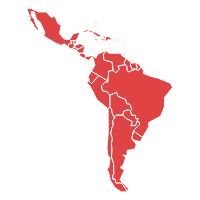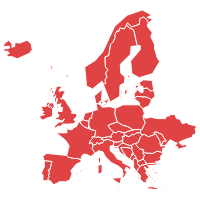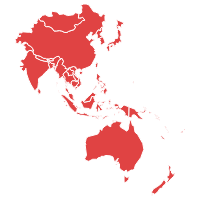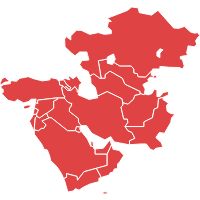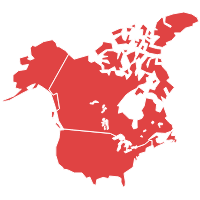- Carbohydrates
- Parenteral Lipid Emulsions
- Amino Acid Solutions
- Trace elements, Electrolytes, & Minerals
- Others
Parenteral Nutrition Market size was valued at USD 2,437.2 million in 2022 and is poised to grow at a significant CAGR of 7.4% from 2023-2029. Parenteral nutrition is a method of feeding liquid nutrients such as carbs, proteins, lipids, vitamins, minerals, electrolytes, vitamins, and proteins to persons who have a tube inserted into their stomach or small intestine. With more than 30.5% market share, the amino acid solution segment was the most popular. This is due to a rise in the use of amino acid solutions, which is linked to a rise in the number of regulatory-approved solutions. Amino acid solutions for parenteral nutrition are enriched in branched-chain amino acids and low in aromatic amino acids. amino acid solutions for parenteral nutrition provide the nine essential amino acids (histidine, isoleucine, leucine, lysine, methionine, phenylalanine, threonine, tryptophan, and valine) in amounts varying between 38 and 57% of total amino acids. Commonly used amino acid mixtures also provide nonessential amino acids comprising 43-62% of total amino acids which is essential for the body of the patent. Furthermore, freshly accessible amino acid solutions have fewer adverse effects, which improves patient outcomes. players are focusing on launching new products to maintain growth in the market. The rising prevalence of malnutrition, chronic diseases, growing natality rate, and increasing premature births are among the primary factors catalyzing the demand for Parenteral Nutrition around the world.
Parenteral Nutrition Market Key Developments:
- In July, 2017, Baxter International, Inc., has acquired Claris Injectables Limited, which was a wholly-owned subsidiary of Claris Lifesciences Limited.
Parenteral Nutrition Market Summary
Study Period
2024-2030
Base Year
2023
CAGR
7.4%
Largest Market
North America
Fastest Growing Market
Asia-Pacific
Parenteral Nutrition Market Dynamics
The rising frequency of chronic diseases such as cancer is having a beneficial influence on product consumption throughout the world. Parenteral nutrition aids in the delivery of essential nutrients, which aids in the maintenance of strength, energy, and hydration in cancer patients at all stages from diagnosis to recovery. According to the World Health Organization, cancer causes roughly 8.2 million deaths per year, accounting for 13.0% of all deaths globally. Furthermore, new cancer cases are predicted to grow by 70.0 percent during the next two decades. the increasing prevalence of cancer is one of the key factors contributing to the market growth in the forecasting period.
Key Features of the Reports
- The parenteral nutrition market report provides granular level information about the market size, regional market share, historic market (2018-2022) and forecast (2023-2029)
- The report covers in-detail insights about the competitors overview, company share analysis, key market developments, and their key strategies
- The report outlines drivers, restraints, unmet needs, and trends that are currently affecting the market
- The report tracks recent innovations, key developments, and start-up details that are actively working in the market
- The report provides a plethora of information about market entry strategies, regulatory framework, and reimbursement scenario

Parenteral Nutrition Market Segmentation
By Type
By Dosage Form
- Bags
- Bottles
- Others
By Application
- Adult
- Paediatric
By Disease
- Cancer
- Critical Care
- Neurological Disorder
- Gastrointestinal Diseases
- Others
By Geography
- North America
- Asia Pacific
- Europe
- Latin America
- Middle East and Africa
Frequently Asked Questions
2022 is the base year and 2029 is the forecast year.
The report covers the five regions and 15+ countries market data: North America (United States, Canada), Europe (Germany, France, Italy, Spain, and United Kingdom (UK), Asia Pacific (China, India, Japan, Australia & New Zealand), Latin America (Brazil, Mexico, Argentina) and Middle East and Africa (Saudi Arabia, United Arab Emirates, South Africa).
In our report, we provide 12-15 market players’ information into the report. However, based on the client’s request we will provide additional country and regional market players information as well.
| 1.Executive Summary |
| 2.Global Parenteral Nutrition Market Introduction |
| 2.1.Global Parenteral Nutrition Market - Taxonomy |
| 2.2.Global Parenteral Nutrition Market - Definitions |
| 2.2.1.Type |
| 2.2.2.Dosage Form |
| 2.2.3.Application |
| 2.2.4.Disease |
| 2.2.5.Region |
| 3.Global Parenteral Nutrition Market Dynamics |
| 3.1. Drivers |
| 3.2. Restraints |
| 3.3. Opportunities/Unmet Needs of the Market |
| 3.4. Trends |
| 3.5. Product Landscape |
| 3.6. New Product Launches |
| 3.7. Impact of COVID 19 on Market |
| 4.Global Parenteral Nutrition Market Analysis, 2018 - 2022 and Forecast 2023 - 2029 |
| 4.1. Market Analysis, 2018 - 2022 and Forecast, 2023 - 2029, (Sales Value USD Million) |
| 4.2. Year-Over-Year (Y-o-Y) Growth Analysis (%) |
| 4.3. Market Opportunity Analysis |
| 5.Global Parenteral Nutrition Market By Type, 2018 - 2022 and Forecast 2023 - 2029 (Sales Value USD Million) |
| 5.1. Carbohydrates |
| 5.1.1. Market Analysis, 2018 - 2022 and Forecast, 2023 - 2029, (Sales Value USD Million) |
| 5.1.2. Year-Over-Year (Y-o-Y) Growth Analysis (%) and Market Share Analysis (%) |
| 5.1.3. Market Opportunity Analysis |
| 5.2. Parenteral Lipid Emulsions |
| 5.2.1. Market Analysis, 2018 - 2022 and Forecast, 2023 - 2029, (Sales Value USD Million) |
| 5.2.2. Year-Over-Year (Y-o-Y) Growth Analysis (%) and Market Share Analysis (%) |
| 5.2.3. Market Opportunity Analysis |
| 5.3. Amino Acid Solutions |
| 5.3.1. Market Analysis, 2018 - 2022 and Forecast, 2023 - 2029, (Sales Value USD Million) |
| 5.3.2. Year-Over-Year (Y-o-Y) Growth Analysis (%) and Market Share Analysis (%) |
| 5.3.3. Market Opportunity Analysis |
| 5.4. Trace elements, Electrolytes, & Minerals |
| 5.4.1. Market Analysis, 2018 - 2022 and Forecast, 2023 - 2029, (Sales Value USD Million) |
| 5.4.2. Year-Over-Year (Y-o-Y) Growth Analysis (%) and Market Share Analysis (%) |
| 5.4.3. Market Opportunity Analysis |
| 5.5. Others |
| 5.5.1. Market Analysis, 2018 - 2022 and Forecast, 2023 - 2029, (Sales Value USD Million) |
| 5.5.2. Year-Over-Year (Y-o-Y) Growth Analysis (%) and Market Share Analysis (%) |
| 5.5.3. Market Opportunity Analysis |
| 6.Global Parenteral Nutrition Market By Dosage Form, 2018 - 2022 and Forecast 2023 - 2029 (Sales Value USD Million) |
| 6.1. Bags |
| 6.1.1. Market Analysis, 2018 - 2022 and Forecast, 2023 - 2029, (Sales Value USD Million) |
| 6.1.2. Year-Over-Year (Y-o-Y) Growth Analysis (%) and Market Share Analysis (%) |
| 6.1.3. Market Opportunity Analysis |
| 6.2. Bottles |
| 6.2.1. Market Analysis, 2018 - 2022 and Forecast, 2023 - 2029, (Sales Value USD Million) |
| 6.2.2. Year-Over-Year (Y-o-Y) Growth Analysis (%) and Market Share Analysis (%) |
| 6.2.3. Market Opportunity Analysis |
| 6.3. Others |
| 6.3.1. Market Analysis, 2018 - 2022 and Forecast, 2023 - 2029, (Sales Value USD Million) |
| 6.3.2. Year-Over-Year (Y-o-Y) Growth Analysis (%) and Market Share Analysis (%) |
| 6.3.3. Market Opportunity Analysis |
| 7.Global Parenteral Nutrition Market By Application, 2018 - 2022 and Forecast 2023 - 2029 (Sales Value USD Million) |
| 7.1. Adult |
| 7.1.1. Market Analysis, 2018 - 2022 and Forecast, 2023 - 2029, (Sales Value USD Million) |
| 7.1.2. Year-Over-Year (Y-o-Y) Growth Analysis (%) and Market Share Analysis (%) |
| 7.1.3. Market Opportunity Analysis |
| 7.2. Paediatric |
| 7.2.1. Market Analysis, 2018 - 2022 and Forecast, 2023 - 2029, (Sales Value USD Million) |
| 7.2.2. Year-Over-Year (Y-o-Y) Growth Analysis (%) and Market Share Analysis (%) |
| 7.2.3. Market Opportunity Analysis |
| 8.Global Parenteral Nutrition Market By Disease, 2018 - 2022 and Forecast 2023 - 2029 (Sales Value USD Million) |
| 8.1. Cancer |
| 8.1.1. Market Analysis, 2018 - 2022 and Forecast, 2023 - 2029, (Sales Value USD Million) |
| 8.1.2. Year-Over-Year (Y-o-Y) Growth Analysis (%) and Market Share Analysis (%) |
| 8.1.3. Market Opportunity Analysis |
| 8.2. Critical Care |
| 8.2.1. Market Analysis, 2018 - 2022 and Forecast, 2023 - 2029, (Sales Value USD Million) |
| 8.2.2. Year-Over-Year (Y-o-Y) Growth Analysis (%) and Market Share Analysis (%) |
| 8.2.3. Market Opportunity Analysis |
| 8.3. Neurological Disorder |
| 8.3.1. Market Analysis, 2018 - 2022 and Forecast, 2023 - 2029, (Sales Value USD Million) |
| 8.3.2. Year-Over-Year (Y-o-Y) Growth Analysis (%) and Market Share Analysis (%) |
| 8.3.3. Market Opportunity Analysis |
| 8.4. Gastrointestinal Diseases |
| 8.4.1. Market Analysis, 2018 - 2022 and Forecast, 2023 - 2029, (Sales Value USD Million) |
| 8.4.2. Year-Over-Year (Y-o-Y) Growth Analysis (%) and Market Share Analysis (%) |
| 8.4.3. Market Opportunity Analysis |
| 8.5. Others |
| 8.5.1. Market Analysis, 2018 - 2022 and Forecast, 2023 - 2029, (Sales Value USD Million) |
| 8.5.2. Year-Over-Year (Y-o-Y) Growth Analysis (%) and Market Share Analysis (%) |
| 8.5.3. Market Opportunity Analysis |
| 9.Global Parenteral Nutrition Market By Region, 2018 - 2022 and Forecast 2023 - 2029 (Sales Value USD Million) |
| 9.1. North America |
| 9.1.1. Market Analysis, 2018 - 2022 and Forecast, 2023 - 2029, (Sales Value USD Million) |
| 9.1.2. Year-Over-Year (Y-o-Y) Growth Analysis (%) and Market Share Analysis (%) |
| 9.1.3. Market Opportunity Analysis |
| 9.2. Europe |
| 9.2.1. Market Analysis, 2018 - 2022 and Forecast, 2023 - 2029, (Sales Value USD Million) |
| 9.2.2. Year-Over-Year (Y-o-Y) Growth Analysis (%) and Market Share Analysis (%) |
| 9.2.3. Market Opportunity Analysis |
| 9.3. Asia Pacific (APAC) |
| 9.3.1. Market Analysis, 2018 - 2022 and Forecast, 2023 - 2029, (Sales Value USD Million) |
| 9.3.2. Year-Over-Year (Y-o-Y) Growth Analysis (%) and Market Share Analysis (%) |
| 9.3.3. Market Opportunity Analysis |
| 9.4. Middle East and Africa (MEA) |
| 9.4.1. Market Analysis, 2018 - 2022 and Forecast, 2023 - 2029, (Sales Value USD Million) |
| 9.4.2. Year-Over-Year (Y-o-Y) Growth Analysis (%) and Market Share Analysis (%) |
| 9.4.3. Market Opportunity Analysis |
| 9.5. Latin America |
| 9.5.1. Market Analysis, 2018 - 2022 and Forecast, 2023 - 2029, (Sales Value USD Million) |
| 9.5.2. Year-Over-Year (Y-o-Y) Growth Analysis (%) and Market Share Analysis (%) |
| 9.5.3. Market Opportunity Analysis |
| 10.North America Parenteral Nutrition Market ,2018 - 2022 and Forecast 2023 - 2029 (Sales Value USD Million) |
| 10.1. Type Analysis 2018 - 2022 and Forecast 2023 - 2029 by Sales Value USD Million, Y-o-Y Growth (%), and Market Share (%) |
| 10.1.1.Carbohydrates |
| 10.1.2.Parenteral Lipid Emulsions |
| 10.1.3.Amino Acid Solutions |
| 10.1.4.Trace elements, Electrolytes, & Minerals |
| 10.1.5.Others |
| 10.2. Dosage Form Analysis 2018 - 2022 and Forecast 2023 - 2029 by Sales Value USD Million, Y-o-Y Growth (%), and Market Share (%) |
| 10.2.1.Bags |
| 10.2.2.Bottles |
| 10.2.3.Others |
| 10.3. Application Analysis 2018 - 2022 and Forecast 2023 - 2029 by Sales Value USD Million, Y-o-Y Growth (%), and Market Share (%) |
| 10.3.1.Adult |
| 10.3.2.Paediatric |
| 10.4. Disease Analysis 2018 - 2022 and Forecast 2023 - 2029 by Sales Value USD Million, Y-o-Y Growth (%), and Market Share (%) |
| 10.4.1.Cancer |
| 10.4.2.Critical Care |
| 10.4.3.Neurological Disorder |
| 10.4.4.Gastrointestinal Diseases |
| 10.4.5.Others |
| 10.5. Country Analysis 2018 - 2022 and Forecast 2023 - 2029 by Sales Value USD Million, Y-o-Y Growth (%), and Market Share (%) |
| 10.5.1.United States of America (USA) |
| 10.5.2.Canada |
| 11.Europe Parenteral Nutrition Market ,2018 - 2022 and Forecast 2023 - 2029 (Sales Value USD Million) |
| 11.1. Type Analysis and Forecast by Sales Value USD Million, Y-o-Y Growth (%), and Market Share (%) |
| 11.1.1.Carbohydrates |
| 11.1.2.Parenteral Lipid Emulsions |
| 11.1.3.Amino Acid Solutions |
| 11.1.4.Trace elements, Electrolytes, & Minerals |
| 11.1.5.Others |
| 11.2. Dosage Form Analysis 2018 - 2022 and Forecast 2023 - 2029 by Sales Value USD Million, Y-o-Y Growth (%), and Market Share (%) |
| 11.2.1.Bags |
| 11.2.2.Bottles |
| 11.2.3.Others |
| 11.3. Application Analysis 2018 - 2022 and Forecast 2023 - 2029 by Sales Value USD Million, Y-o-Y Growth (%), and Market Share (%) |
| 11.3.1.Adult |
| 11.3.2.Paediatric |
| 11.4. Disease Analysis 2018 - 2022 and Forecast 2023 - 2029 by Sales Value USD Million, Y-o-Y Growth (%), and Market Share (%) |
| 11.4.1.Cancer |
| 11.4.2.Critical Care |
| 11.4.3.Neurological Disorder |
| 11.4.4.Gastrointestinal Diseases |
| 11.4.5.Others |
| 11.5. Country Analysis 2018 - 2022 and Forecast 2023 - 2029 by Sales Value USD Million, Y-o-Y Growth (%), and Market Share (%) |
| 11.5.1.Germany |
| 11.5.2.France |
| 11.5.3.Italy |
| 11.5.4.United Kingdom (UK) |
| 11.5.5.Spain |
| 11.5.6.Rest of EU |
| 12.Asia Pacific (APAC) Parenteral Nutrition Market ,2018 - 2022 and Forecast 2023 - 2029 (Sales Value USD Million) |
| 12.1. Type Analysis and Forecast by Sales Value USD Million, Y-o-Y Growth (%), and Market Share (%) |
| 12.1.1.Carbohydrates |
| 12.1.2.Parenteral Lipid Emulsions |
| 12.1.3.Amino Acid Solutions |
| 12.1.4.Trace elements, Electrolytes, & Minerals |
| 12.1.5.Others |
| 12.2. Dosage Form Analysis 2018 - 2022 and Forecast 2023 - 2029 by Sales Value USD Million, Y-o-Y Growth (%), and Market Share (%) |
| 12.2.1.Bags |
| 12.2.2.Bottles |
| 12.2.3.Others |
| 12.3. Application Analysis 2018 - 2022 and Forecast 2023 - 2029 by Sales Value USD Million, Y-o-Y Growth (%), and Market Share (%) |
| 12.3.1.Adult |
| 12.3.2.Paediatric |
| 12.4. Disease Analysis 2018 - 2022 and Forecast 2023 - 2029 by Sales Value USD Million, Y-o-Y Growth (%), and Market Share (%) |
| 12.4.1.Cancer |
| 12.4.2.Critical Care |
| 12.4.3.Neurological Disorder |
| 12.4.4.Gastrointestinal Diseases |
| 12.4.5.Others |
| 12.5. Country Analysis 2018 - 2022 and Forecast 2023 - 2029 by Sales Value USD Million, Y-o-Y Growth (%), and Market Share (%) |
| 12.5.1.China |
| 12.5.2.India |
| 12.5.3.Australia and New Zealand (ANZ) |
| 12.5.4.Japan |
| 12.5.5.Rest of APAC |
| 13.Middle East and Africa (MEA) Parenteral Nutrition Market ,2018 - 2022 and Forecast 2023 - 2029 (Sales Value USD Million) |
| 13.1. Type Analysis and Forecast by Sales Value USD Million, Y-o-Y Growth (%), and Market Share (%) |
| 13.1.1.Carbohydrates |
| 13.1.2.Parenteral Lipid Emulsions |
| 13.1.3.Amino Acid Solutions |
| 13.1.4.Trace elements, Electrolytes, & Minerals |
| 13.1.5.Others |
| 13.2. Dosage Form Analysis 2018 - 2022 and Forecast 2023 - 2029 by Sales Value USD Million, Y-o-Y Growth (%), and Market Share (%) |
| 13.2.1.Bags |
| 13.2.2.Bottles |
| 13.2.3.Others |
| 13.3. Application Analysis 2018 - 2022 and Forecast 2023 - 2029 by Sales Value USD Million, Y-o-Y Growth (%), and Market Share (%) |
| 13.3.1.Adult |
| 13.3.2.Paediatric |
| 13.4. Disease Analysis 2018 - 2022 and Forecast 2023 - 2029 by Sales Value USD Million, Y-o-Y Growth (%), and Market Share (%) |
| 13.4.1.Cancer |
| 13.4.2.Critical Care |
| 13.4.3.Neurological Disorder |
| 13.4.4.Gastrointestinal Diseases |
| 13.4.5.Others |
| 13.5. Country Analysis 2018 - 2022 and Forecast 2023 - 2029 by Sales Value USD Million, Y-o-Y Growth (%), and Market Share (%) |
| 13.5.1.GCC Countries |
| 13.5.2.South Africa |
| 13.5.3.Rest of MEA |
| 14.Latin America Parenteral Nutrition Market ,2018 - 2022 and Forecast 2023 - 2029 (Sales Value USD Million) |
| 14.1. Type Analysis and Forecast by Sales Value USD Million, Y-o-Y Growth (%), and Market Share (%) |
| 14.1.1.Carbohydrates |
| 14.1.2.Parenteral Lipid Emulsions |
| 14.1.3.Amino Acid Solutions |
| 14.1.4.Trace elements, Electrolytes, & Minerals |
| 14.1.5.Others |
| 14.2. Dosage Form Analysis 2018 - 2022 and Forecast 2023 - 2029 by Sales Value USD Million, Y-o-Y Growth (%), and Market Share (%) |
| 14.2.1.Bags |
| 14.2.2.Bottles |
| 14.2.3.Others |
| 14.3. Application Analysis 2018 - 2022 and Forecast 2023 - 2029 by Sales Value USD Million, Y-o-Y Growth (%), and Market Share (%) |
| 14.3.1.Adult |
| 14.3.2.Paediatric |
| 14.4. Disease Analysis 2018 - 2022 and Forecast 2023 - 2029 by Sales Value USD Million, Y-o-Y Growth (%), and Market Share (%) |
| 14.4.1.Cancer |
| 14.4.2.Critical Care |
| 14.4.3.Neurological Disorder |
| 14.4.4.Gastrointestinal Diseases |
| 14.4.5.Others |
| 14.5. Country Analysis 2018 - 2022 and Forecast 2023 - 2029 by Sales Value USD Million, Y-o-Y Growth (%), and Market Share (%) |
| 14.5.1.Brazil |
| 14.5.2.Mexico |
| 14.5.3.Rest of LA |
| 15. Competition Landscape |
| 15.1. Market Player Profiles (Introduction, Brand/Product Sales, Financial Analysis, Product Offerings, Key Developments, Collaborations, M & A, Strategies, and SWOT Analysis) |
| 15.2.1.Actavis |
| 15.2.2.Braun Melsungen |
| 15.2.3.Baxter International |
| 15.2.4.Fresenius Kabi |
| 15.2.5.Grifols International |
| 15.2.6.Hospira |
| 15.2.7.Otsuka Pharmaceutical Factory |
| 15.2.8.Sichuan Kelun Pharmaceutical |
| 16. Research Methodology |
| 17. Appendix and Abbreviations |
- Actavis
- Braun Melsungen
- Baxter International
- Fresenius Kabi
- Grifols International
- Hospira
- Otsuka Pharmaceutical Factory
- Sichuan Kelun Pharmaceutical
